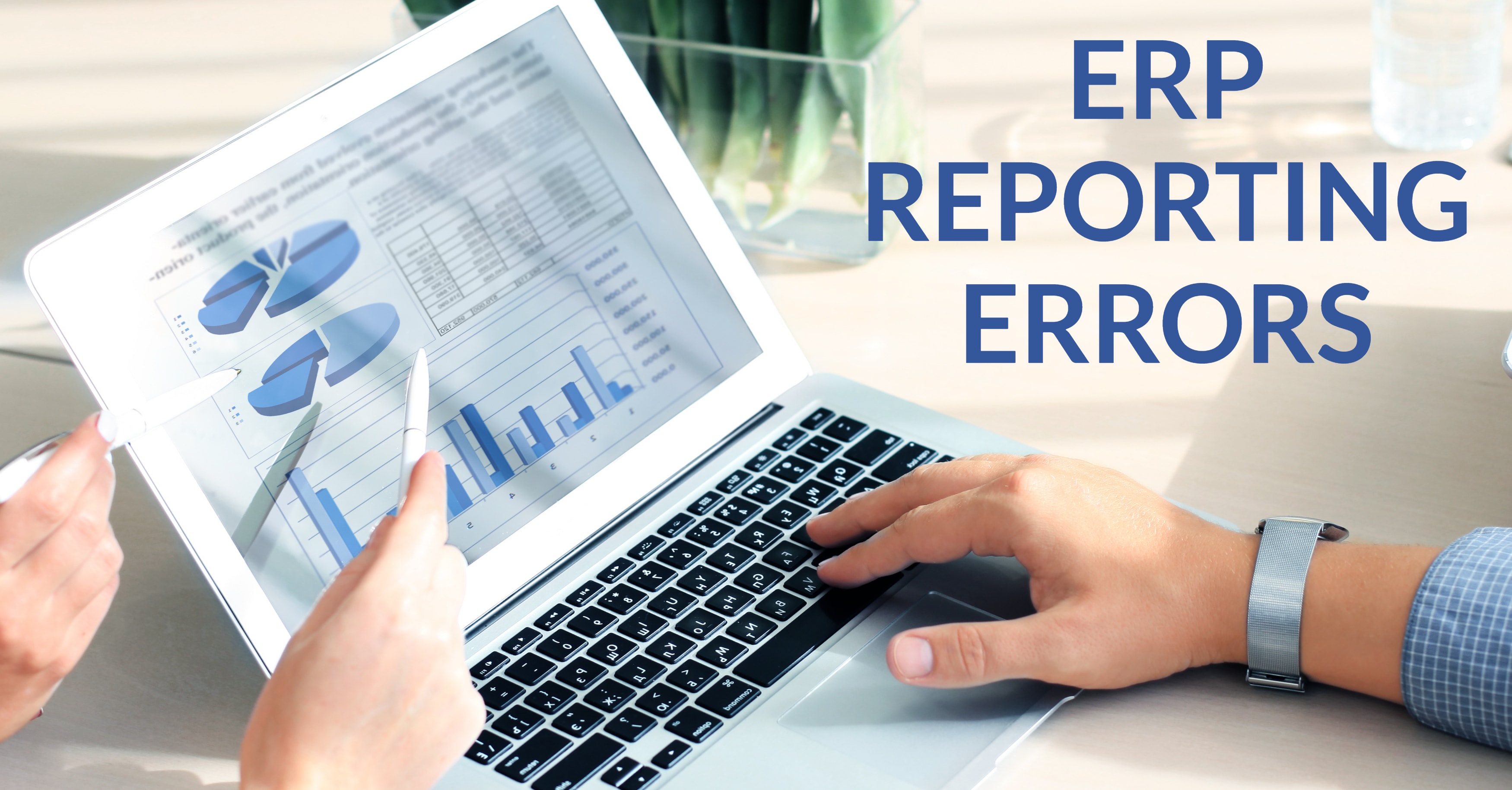Don’t Make These Reporting Mistakes
Enterprise resource planning (ERP) vendors have outdone themselves in delivering enterprise insights and comprehensive reports. Business intelligence (BI) and analytics can transform how manufacturers and distributors access data and develop strategies. This visibility is more important than ever, as regulations become stricter and supply chains become more complex.
Despite growing reporting needs, businesses still struggle to build reporting requirements into their ERP implementations. Sidelining reports in your ERP project could result in poor utilization of data and critical errors. Learn three of the most common ERP reporting mistakes and how to avoid them in your implementation.
Failing to Consider Compliance
Throughout ERP selection, companies are looking for solutions that can fulfill multiple requirements, such as providing supply chain visibility and supporting multi-level BOMs. However, compliance doesn’t always make the list, resulting in an implementation that lacks the necessary reporting features to protect your business from expensive fines.
An ERP solution with appropriate tax and fiscal reporting features and tracking capabilities out of the box can go a long way in supporting your company’s compliance efforts. Epicor, for example, ensures its software is in line with the latest regulations, including NAFTA, IAS and IFRS. The vendor also supports multiple industry standards, such as FDA, ISO, automotive (TS) and aerospace (AS) requirements.
Even if your ERP solution has the most comprehensive governance, risk and compliance features, there’s a possibility that you’ll still need to modify your system to meet the most stringent standards. This is where customization comes in. Epicor’s customization engine makes it simple to modify records to track specific dates and provide greater visibility to maintain compliance. Working with an expert consultant can help you determine if your out-of-the-box reports fall short and what kind of customizations you need to stay on top of regulations.
Trying to Track Everything
Businesses have more access than ever to BI tools, data analytics and real-time metrics. However, just because you can track everything doesn’t mean you should. ERP implementations become unwieldy when you build too many reports and dashboards. Plus, users become bombarded with information that they don’t even know how to use. Project complexity and user confusion contribute to fallible reporting strategies and inaccurate data.
When it comes to reporting, it’s all about quality, not quantity. During business process modeling, determine key performance indicators (KPIs). What are the critical metrics and reports required by each user? Where do you experience gaps in current business insights? Meeting these requirements and filling gaps should be the priority in your reporting strategies. In addition to ensuring your ERP solution includes essential reports, develop a training strategy that will help each user appropriately leverage enterprise data to improve decision making. These measures will prevent your business from experiencing information overload.
Siloing Data and Reports
There’s a good chance that your business is currently managing reports and metrics across multiple platforms. Unfortunately, an ERP implementation might not fix this problem alone. ERP reporting tools don’t easily allow users to report against non-ERP data. They also work differently from the most common reporting platforms, such as Excel and Power BI, hindering user adoption. This means that users could still be copying and pasting data in multiple platforms even after an implementation, resulting in enormous inefficiencies and errors. ERP collects a tremendous amount of valuable data, but what’s the best way to put this data to use?
Jet Analytics for Epicor allows your enterprise to create a single data warehouse. Rather than learn a new set of reporting functions, users can leverage their familiar Excel or Power BI tools to instantly develop reports. Though Excel and Power BI normally can’t accommodate the mass amounts of data generated in your ERP, Jet Analytics smooths over this issue, allowing users to report against their largest Epicor databases. With drag-and-drop functionality, reporting automation and pre-built reports and dashboards, Jet Analytics makes it easy to gain immediate insights from a single data warehouse.
Wrap Up
In today’s manufacturing and distribution environment, data is everything. Without insights from the top floor to the shop floor, your business can’t fully capitalize on new opportunities and make critical process improvements. Jet Analytics enables users to get the most from their Epicor data, simplifying report creation and delivering key metrics in one place.
A certified Epicor partner, Datix has helped manufacturers and distributors transform their business with software for over 20 years. With a full spectrum of ERP solutions and services, our expert consultants are equipped to maximize the value of your software.
Don’t let your data go to waste. Contact Datix to learn more about Epicor and Jet Analytics!
{{cta(‘770c1544-d87d-4acb-9fc4-7a25e1385094′,’justifycenter’)}}


